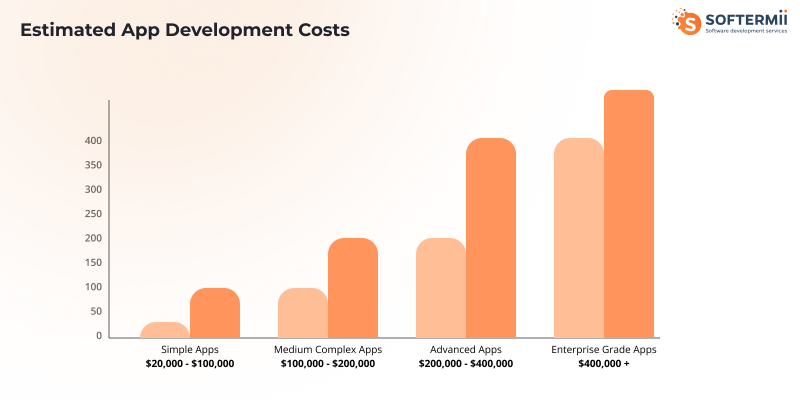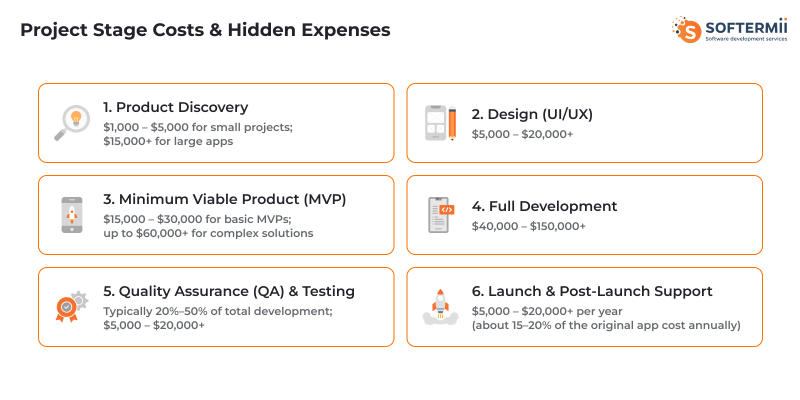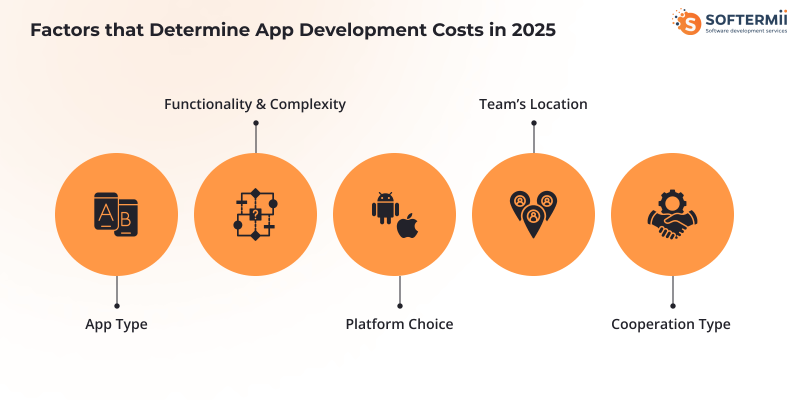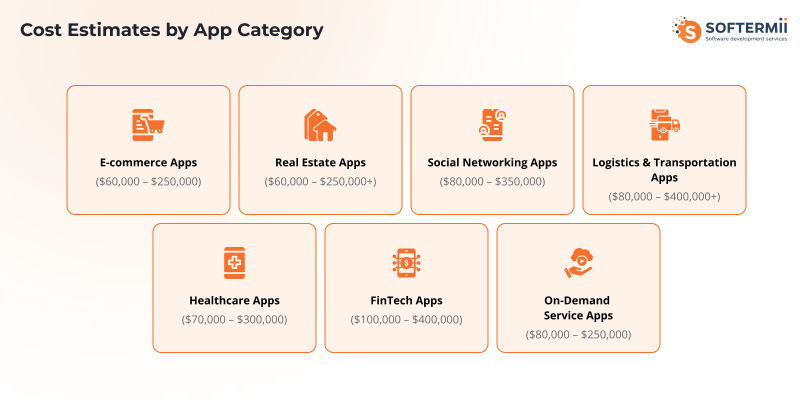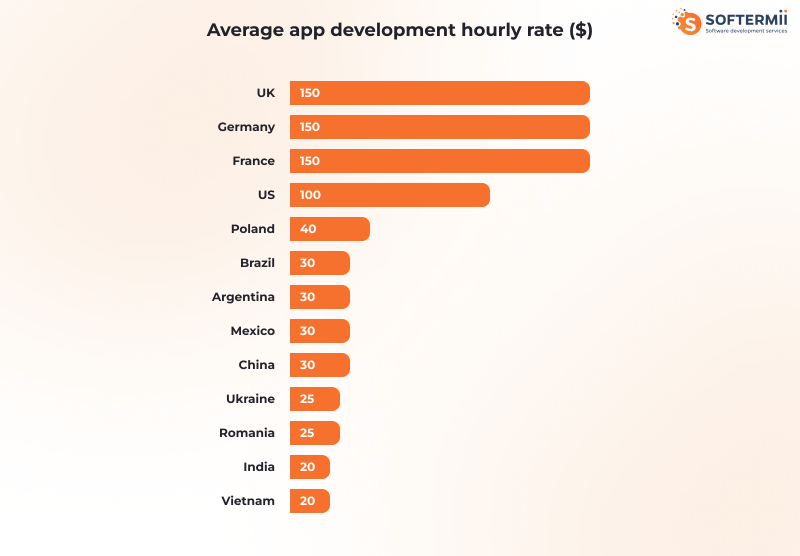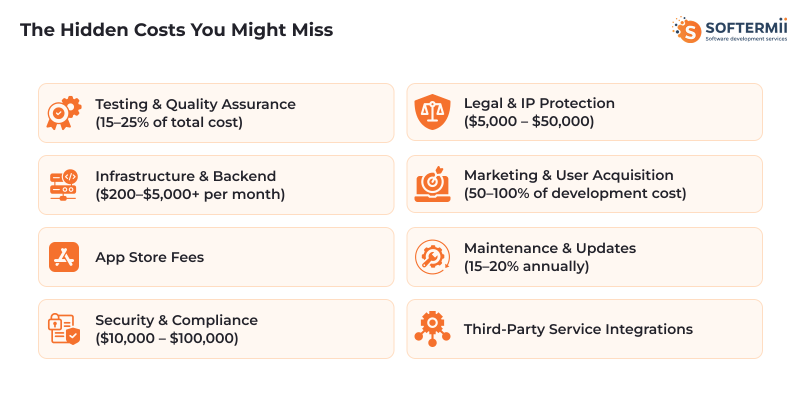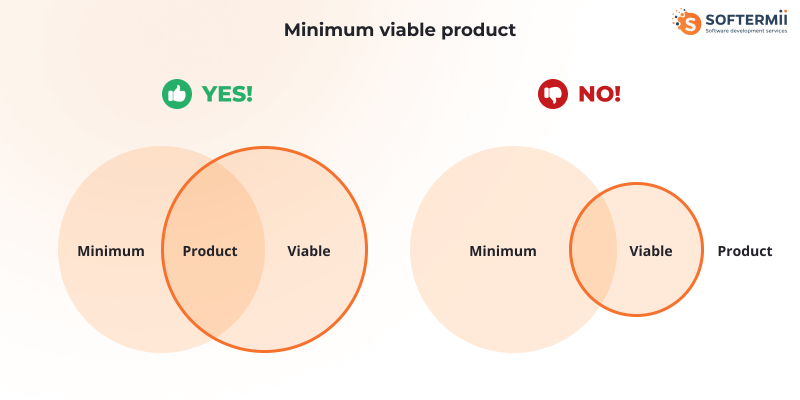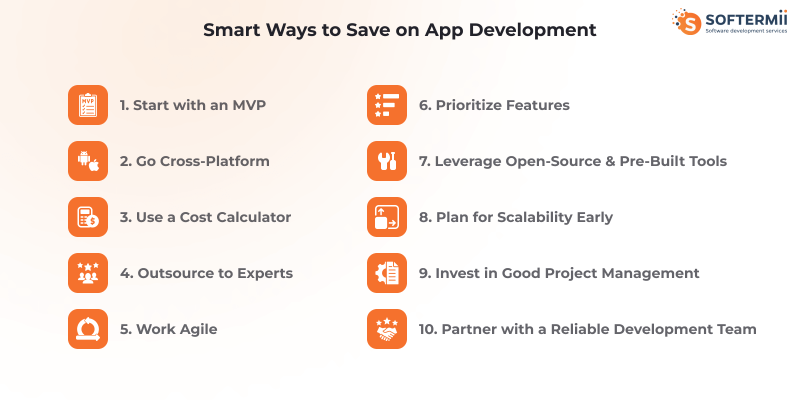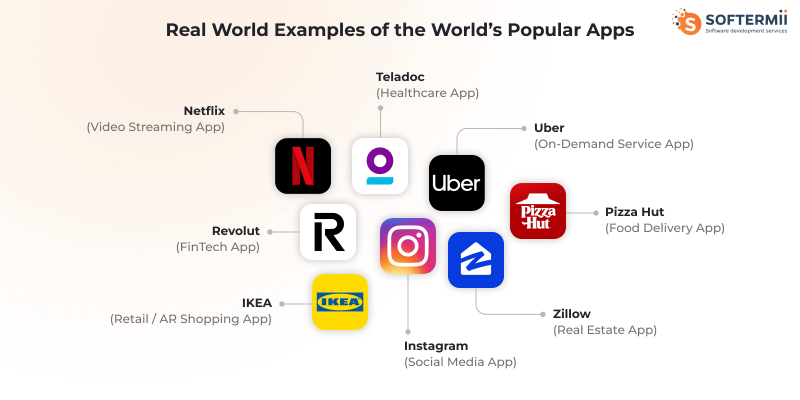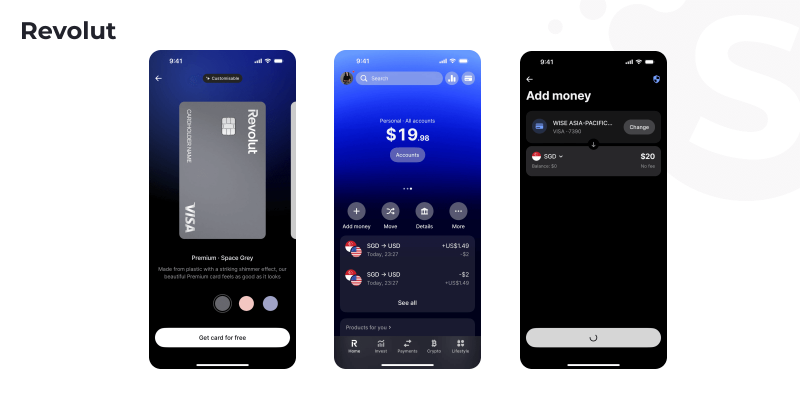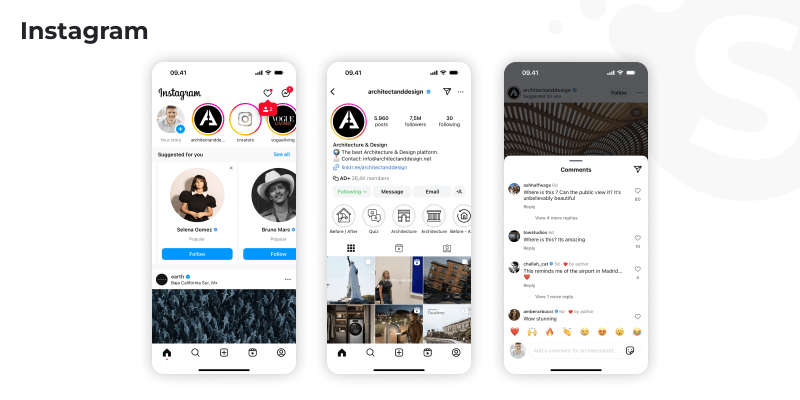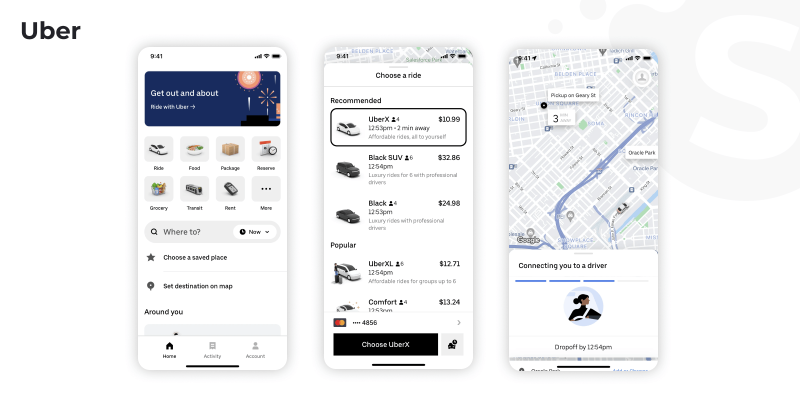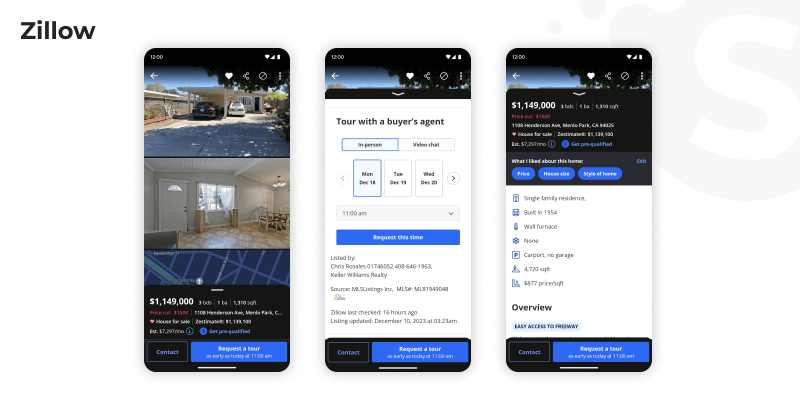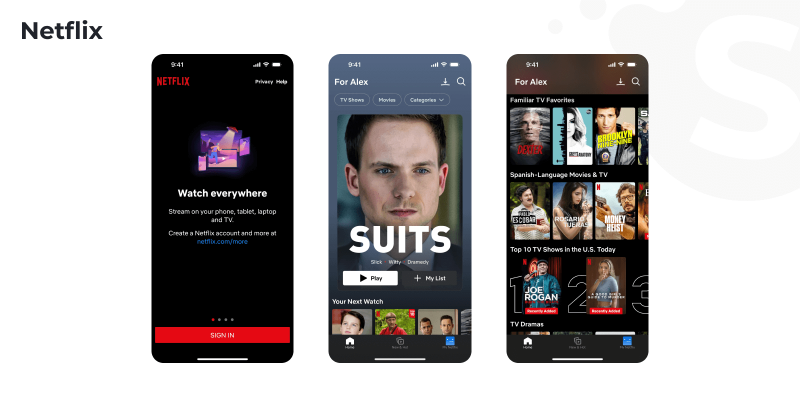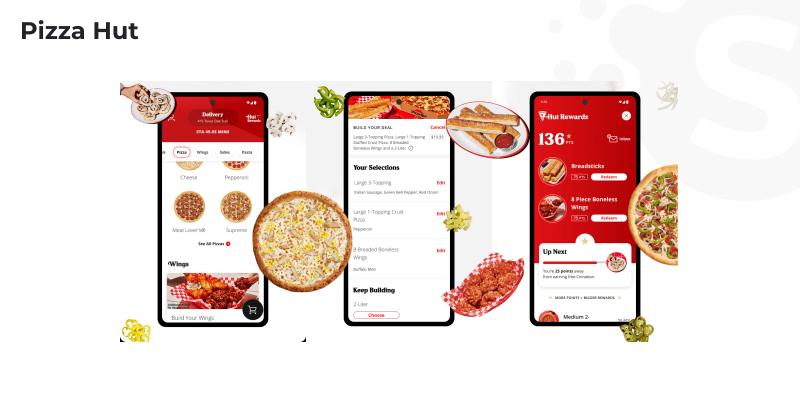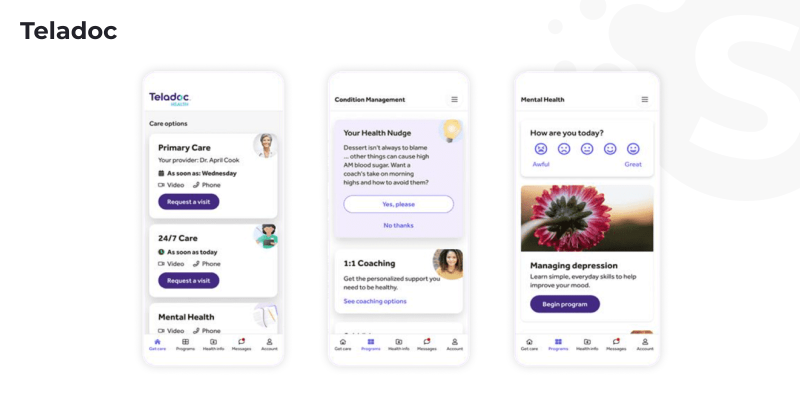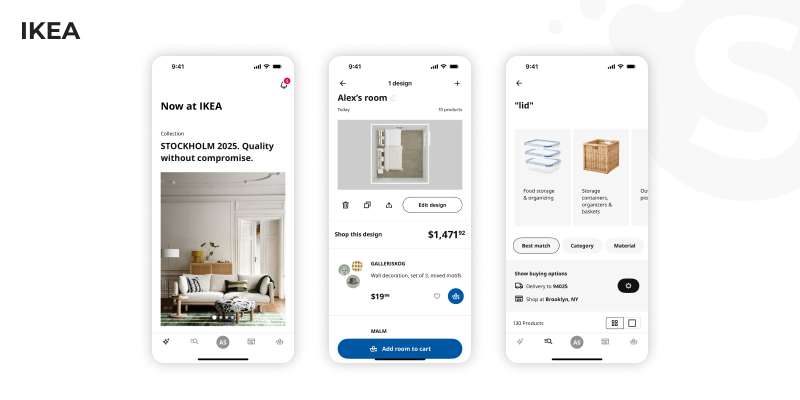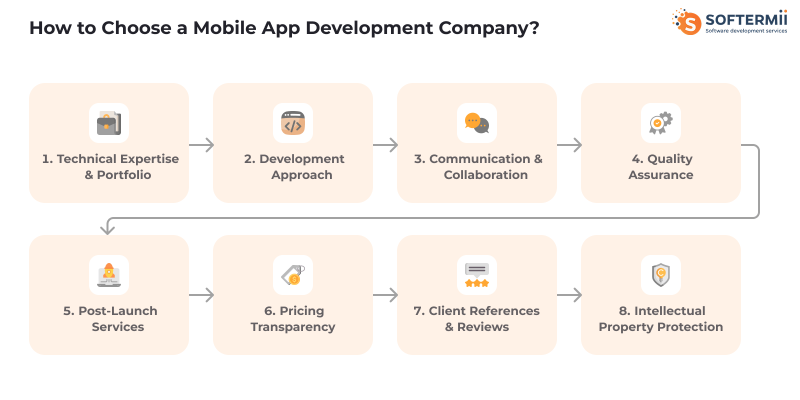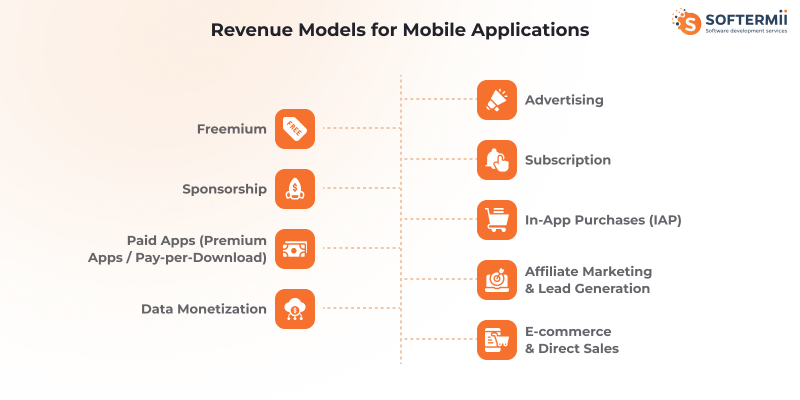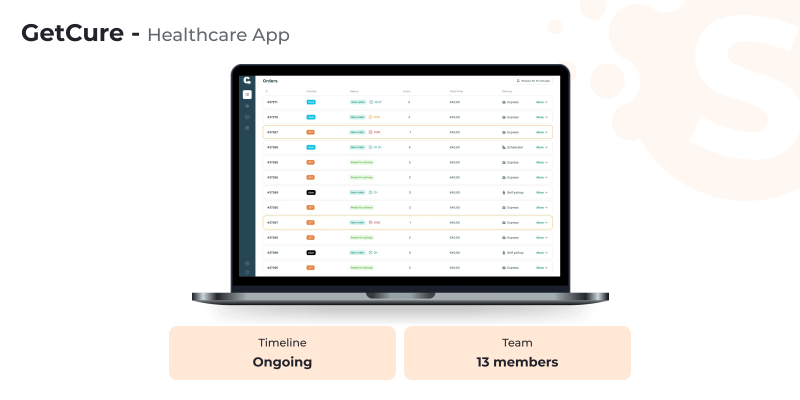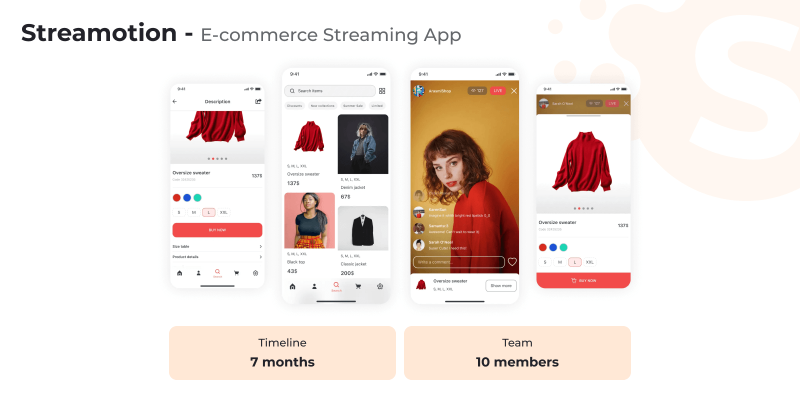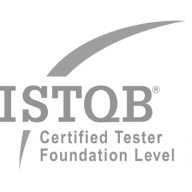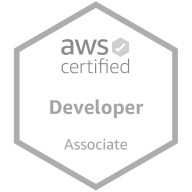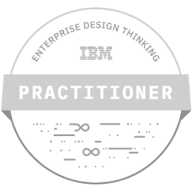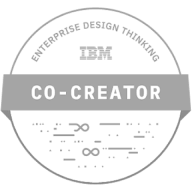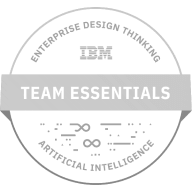
Want to know more? — Subscribe
Mobile apps are now part of our daily lives. From shopping online to booking a doctor's appointment, almost everything can be done through an app. Mobile apps are projected to reach 299 billion downloads worldwide. That's an 8% Compound Annual Growth Rate (CAGR).
| Year | Global Downloads (Billion) | YoY Growth | Key Triggers |
|---|---|---|---|
| 2023 | 257 | 6% | Post-pandemic recovery |
| 2024 | 277 | 7.8% | 5G rollout in 50+ countries |
| 2025 | 299 | 8% | Emerging market smartphone boom |
| 2026 | 324 | 8.4% | Increased adoption of mobile-first services |
| 2027 | 350 | 8% | Expansion of IoT and smart devices integration |

|
|||
With such demand, more businesses want to launch their own mobile apps. But the first question is always the same: "How much does it cost to build an app?"
The answer is not so simple. The price of mobile app development in 2025 depends on many factors: the app's complexity, features, design, platform, and even the region where your developers are located. Costs can range from $20,000 for a simple app to $500,000+ for a large enterprise solution.
We've done the research, and we'll break down the real mobile app development cost in 2025, explain what affects the price, share examples, and give you tips on how to reduce expenses without losing quality.
Average Mobile App Development Costs
Creating a mobile app in 2025 can cost very differently depending on how complex it is. Сosts range from roughly $20,000 for simple apps to over $400,000 for advanced, feature-rich apps, with enterprise-level solutions potentially exceeding $500,000.
Building an app isn't just about writing code. What really matters is knowing how you'll earn from it, making sure people actually need it, and testing every step of the way. That's how you turn an idea into something people love and use.
 Slava Vaniukov
Slava VaniukovTo break it down more clearly:
|
App Complexity |
Cost Range |
Development Timeline |
Key Features |
|---|---|---|---|
|
Simple Apps |
$20,000 - $80,000 |
3-4 months |
Basic UI, user registration, simple database |
|
Medium Complexity |
$80,000 - $200,000 |
4-8 months |
API integration, payment systems, social features |
|
Complex Apps |
$200,000 - $450,000 |
8-12 months |
AI/ML, real-time features, advanced backend |
|
Enterprise Solutions |
$450,000+ |
12+ months |
Multi-platform, scalability, enterprise security |

|
|||
What Really Affects App Development Costs?
The cost to build a mobile app in 2025 depends on many moving parts. Here are the key factors that make one app cheaper or more expensive than another:
1. Overall Cost Ranges
- The total cost of mobile app development typically ranges from $20,000 to $300,000, with an average of $100,000 for an optimized app. And for highly advanced apps using the latest tech, costs can reach $500,000 or more.
- Development costs typically range from $30,000 to over $350,000, depending on the app's complexity and the region where development is conducted.
- Enterprise-level apps can range from $50,000 to $500,000+, with social networking, gaming, and on-demand apps typically falling in the $50,000 – $250,000 range.
2. Type of App & Features
What the app actually does strongly impacts cost. Apps with simple functionality will naturally cost less, while platforms with advanced features, integrations, and scalability requirements can easily reach several hundred thousand dollars. Some examples:
Simple Apps
These are lightweight apps with minimal
functionality, such as basic utilities, contact forms, or push notifications.
They are usually quick to build and cost from $20,000.
Database-Driven Apps
Apps that rely on databases to
manage and process large volumes of data fall into this category. Examples
include booking apps or product catalogs. Costs typically range from
$20,000 to $50,000.
Social Media & Community Apps
Applications like
Facebook, LinkedIn, or niche community platforms require advanced features
such as user profiles, messaging, feeds, and content sharing. Development can
range from $50,000 to $400,000, depending on the scale.
Gaming Apps
From casual puzzle games to high-performance
3D experiences, gaming apps demand heavy design, animation, and sometimes
integration with third-party engines. Costs usually fall between
$50,000 and $500,000+.
On-Demand Apps
Apps like Uber, DoorDash, or Glovo rely
on complex real-time features such as GPS tracking, in-app payments, and
rating systems. On-demand platforms cost around
$50,000 to $250,000, but fully scaled products can exceed
$500,000.
Enterprise & Business Apps
These apps are designed
to optimize workflows and support business operations, like CRM systems, ERP
platforms, or inventory management tools. Budgets range widely—from
$50,000 to $500,000+, with large custom ERP systems reaching
$700,000 or more.
Real Estate Apps
Property platforms (like Zillow or
Realtor.com) often include listings, search filters, maps, mortgage
calculators, and sometimes AR/VR tours. Costs typically range from
$60,000 to $250,000, depending on feature depth. More
advanced versions with AI-driven recommendations or 3D/VR integrations can
exceed $350,000.
Logistics & Transportation Apps
These apps are
designed for supply chain management, fleet tracking, and delivery
optimization. They often involve GPS integration, route planning, warehouse
management, and analytics dashboards. A basic logistics app may cost
$80,000 to $200,000, while large-scale enterprise logistics
systems can easily reach $400,000–$600,000+.
Fintech Apps
Financial technology applications, such as mobile banking, digital wallets,
payment gateways, investment platforms, or insurance apps, require a high
level of security, compliance (PCI DSS, GDPR), and integration with external
financial systems. Because of this complexity, fintech development usually
starts at $100,000 and can easily reach
$500,000+, depending on whether it's a lightweight payment
app or a full-scale banking platform.
Retail & eCommerce Apps
Online shopping apps need
product catalogs, payment gateways, and order management. Depending on scale,
costs range from $70,000 to $300,000.
Healthcare & Wellness Apps
These include
telemedicine, fitness tracking, and HIPAA-compliant healthcare solutions.
Because of strict compliance and security requirements, budgets typically
start at $100,000 and can exceed $500,000.
Video Streaming & Media Apps
Apps like Netflix,
YouTube, or Twitch require heavy video processing, streaming capabilities, and
content delivery optimization. Development costs generally range from
$150,000 to $500,000+.
Education & Learning Apps
Language learning,
tutoring, or skill-building apps (like Duolingo) include gamification,
progress tracking, and sometimes video integration. Costs often range from
$80,000 to $300,000.
Specialized Apps (AR, Dating, Taxi, etc.)
- AR/VR apps: $120,000 – $400,000+
- Restaurant apps: $50,000 – $180,000
- Food delivery apps: $80,000 – $250,000
- Taxi apps (Uber-like): $150,000 – $500,000+
- Dating apps (like Tinder): $80,000 – $350,000

3. Region of the Development Team (Geography)
The location of your development team has a major impact on the final price. Rates differ depending on local labor costs and expertise, making some regions significantly more expensive than others:
4. Project Stage Costs & Hidden Expenses
Development is more than just building the app:
1. Product Discovery
Every successful app starts with discovery. This stage involves market research, defining goals, creating user stories, and building a project roadmap. It helps align the app's vision with user needs while identifying risks and technical challenges early on.
- Cost: $1,000 – $5,000 for small projects; $15,000+ for large apps with advanced functionality.
2. Design (UI/UX)
Good design ensures usability and engagement. This phase covers wireframing, prototyping, and full UI/UX design. Wireframes map functionality, prototypes test flows, and final designs bring the product to life.
- Cost: $5,000 – $20,000+, depending on complexity and number of screens.
3. Minimum Viable Product (MVP)
An MVP is the first working version of your app with core features. It allows you to test the idea, collect user feedback, and refine the product before scaling.
- Cost: $15,000 – $30,000 for basic MVPs; up to $60,000+ for complex solutions with custom backend or integrations.
4. Full Development
This is where coding, backend development, integrations, and infrastructure setup occur. The scope depends on app type and functionality: authentication, user profiles, payment systems, messaging, location services, video calls, or advanced AI/AR features.
- Cost: $40,000 – $150,000+ (can go higher for enterprise-grade or feature-rich apps).
5. Quality Assurance (QA) & Testing
Testing is crucial to ensure performance across devices and platforms. QA may include manual testing, automated testing, usability tests, and security checks. Skimping here often leads to costly bugs post-launch.
- Cost: Typically 20%–50% of total development; $5,000 – $20,000+ depending on scope.
6. Launch & Post-Launch Support
Development doesn't end when your app is released. Ongoing support includes bug fixes, feature updates, cloud hosting, app store compliance, and scaling infrastructure.
- Cost: $5,000 – $20,000+ per year (about 15–20% of the original app cost annually).
Summary Table: Cost Drivers at a Glance
Summary Table: Cost Drivers at a Glance
|
Cost Factor |
Description |
Estimated Cost / Range ($) |
|---|---|---|
|
App Type & Features |
Simple apps, database-driven, social media, gaming, on-demand, enterprise, fintech, real estate, logistics, eCommerce, healthcare, education, AR/VR, etc. |
$5,000 – $700,000+ depending on complexity |
|
Project Stage: Discovery |
Market research, requirement analysis, roadmap, risk identification |
$1,000 – $5,000 (small) $15,000+ (large) |
|
Project Stage: Design (UI/UX) |
Wireframing, prototyping, full UX/UI design |
$5,000 – $20,000+ |
|
Project Stage: MVP |
Early version with core features to test ideas and gather user feedback |
$15,000 – $30,000 (basic) $60,000+ (complex) |
|
Project Stage: Development |
Full coding, backend, integrations, infrastructure, main app features |
$40,000 – $150,000+ |
|
Project Stage: QA & Testing |
Manual/automated testing, usability, performance, security checks |
$5,000 – $20,000+ or 20–50% of dev cost |
|
Post-Launch Support & Maintenance |
Updates, bug fixes, cloud hosting, server support, scaling |
$5,000 – $20,000+ per year |
|
Infrastructure & Backend |
Servers, APIs, databases, cloud storage, scalability solutions |
Varies by complexity |
|
App Hosting & Store Listing |
Cloud hosting, Apple App Store & Google Play fees |
$25 – $99+ annually |
|
Marketing & User Acquisition |
Ads, ASO, SEO, campaigns, retention strategies |
Varies, often equal to or exceeding dev cost |
|
Security & Compliance |
Data encryption, GDPR, HIPAA, PCI DSS, fraud prevention |
Varies by industry and app type |
|
Region of Development Team |
Costs differ based on team location; reflects labor rates and market conditions |
North America: $50k–$500k+ Western Europe: $40k–$350k Eastern Europe: $10k–$200k Asia: $5k–$150k |
|
App Complexity |
Simple, medium, or complex apps; more features and integrations increase cost |
Simple: $5k–$20k Medium: $20k–$100k Complex: $100k–$700k+ |

|
||
How Complexity Shapes the Price of Your App
The final price isn't random; it depends on several key factors, with app complexity being one of the most significant.
Simple Apps ($40,000 - $80,000)
These are the most basic apps with limited functionality. They usually include simple features like login, profile setup, and content display. We mean apps like calculators, flashlight tools, or basic info apps. Typical elements are:
- Standard user interface (UI) components
- Basic data storage
- Little to no third-party integrations
- Simple navigation flow.
Medium Complexity Apps ($80,000 - $200,000)
Mid-level apps are more advanced and bring real value to both users and businesses. They often include features such as payment systems, social media logins, or even media streaming. Examples include eCommerce or fitness apps. Common features are:
- Payment gateway integration
- Social media connections
- Push notifications
- In-app analytics
- Audio/video streaming options.
Complex Apps ($200,000 - $450,000+)
At the top tier are enterprise or large-scale apps. These apps utilize advanced technologies and cater to large user bases. They may use artificial intelligence, augmented reality, or real-time data processing. Features often include:
- AI/ML-powered functionality
- Real-time updates and data syncing
- Robust and scalable backend systems
- Multi-language support
- High-level security protocols
- Cloud infrastructure for scaling.
Cost Estimates by App Category
The price depends on what the app does, how secure it needs to be, and the complexity of its features. Here's a quick look at common app categories:
E-commerce Apps ($60,000 – $250,000)
E-commerce apps make it easy for people to look through products, add items to their shopping cart, and pay safely. To compete with major players, these apps require smooth navigation, multiple payment methods, order tracking, and effective inventory management. Many also have reward systems or personalized offers. More advanced apps include tools like AR to preview products or AI to suggest items customers may like.
Examples: Amazon, eBay, AliExpress, Zara, H&M, Beyond Health, Banana Beauty, Shopify stores.
Real Estate Apps ($60,000 – $250,000+)
Real estate apps provide property listings, advanced search and filters, virtual tours, mortgage calculators, and appointment scheduling. High-end apps may include AR/VR property previews, AI-based recommendations, or CRM integration for agents.
Examples: Zillow, Realtor.com, Redfin, Trulia, Rightmove, Houzez, Rently, Avnu.
Social Networking Apps ($80,000 – $350,000)
Social apps are usually more expensive to build because they must handle a lot of activity at once. They need features like real-time chat, instant notifications, sharing photos and videos, and the ability to support millions of users at the same time. On top of that, they require powerful servers, cloud systems that can grow as the app grows, and tools to keep the community safe from harmful content.
Examples: Facebook, Instagram, TikTok, LinkedIn, Snapchat, Clubhouse, Cococure, RiverLand.
Logistics & Transportation Apps ($80,000 – $400,000+)
Logistics apps manage supply chains, deliveries, and fleet operations. Features often include route optimization, warehouse management, GPS tracking, shipment monitoring, and reporting dashboards. Enterprise-level logistics apps require complex backend systems and integration with third-party tools, increasing costs.
Examples: Flexport, Shippo, FourKites, Routific, LogiNext, Bringg, NeatSend.
Healthcare Apps ($70,000 – $300,000)
Healthcare apps are different from most other apps because they deal with sensitive health information. This means they must follow strict rules, such as HIPAA or GDPR, and have robust security measures in place. Common features include online doctor visits, booking appointments, health and fitness tracking, reminders for medicine, and connections to wearable devices. Some advanced apps even use AI to check health data or connect to electronic medical records.
Examples: MyChart, Teladoc, HealthTap, Medisafe, Apple Health, Fitbit, Locum.
FinTech Apps ($100,000 – $400,000)
Finance apps need to work with the same level of security as banks. They use strong encryption and follow rules to protect money and personal information. Popular features include digital wallets, instant payments, money transfers, stock trading, fraud alerts, and investment tools. These apps often connect with banks, support different currencies, or even work with cryptocurrencies, which adds to the cost and complexity.
Examples: PayPal, Revolut, Robinhood, Coinbase, Mint, Venmo, Monzo, Expedipay, SmartStart.
On-Demand Service Apps ($80,000 – $250,000)
On-demand apps connect people to services in real time. They usually have two sides—one for customers and one for service providers. Key features include live GPS tracking, in-app payments, and smart systems that match users with the right driver, delivery person, or worker. Since these apps deal with many orders and updates at once, they need a strong backend system and good customer support tools.
Examples: Uber, Lyft, DoorDash, Glovo, TaskRabbit, Instacart, Postmates, Wobi, Dollar Shave Club.
iOS vs Android vs Cross-Platform: Which Costs More?
The platform you choose for your app, iOS, Android, or cross-platform, plays a big role in how much it costs, how long it takes, and how well it performs.
Native iOS Development
Cost: $50,000 – $300,000
Timeline:
4 – 12 months
Developing natively for iOS means the app is built specifically for Apple devices like the iPhone and iPad. These apps are created with programming languages such as Swift or Objective-C and are fully optimized for Apple's hardware and software.
Pros: Native iOS apps usually have the best performance and smoothest user experience. They can take advantage of all iOS features like Face ID, Apple Pay, Siri, and advanced camera tools. Since Apple devices are high-end, iOS apps are often linked to higher-paying users, which is attractive for businesses.
Cons: The downside is cost—iOS development is usually more expensive because it requires specialized skills. You can only reach iPhone and iPad users, so if you want Android users too, you'll need a separate app, which doubles the cost.
Native Android Development
Cost: $45,000 – $280,000
Timeline:
4 – 12 months
Native Android apps are built using Java or Kotlin and are made for the wide range of Android devices available worldwide. Since Android dominates global market share, especially in Asia, Africa, and South America, this is often the first choice for apps targeting a large, diverse audience.
Pros: The biggest advantage of Android development is access to a huge user base. You can reach billions of users across different types of devices and price ranges. Android also supports a wide variety of customizations and integrations, which makes it flexible for many industries.
Cons: Because Android runs on so many different devices, developers face what's called device fragmentation. This means they must test the app on various screen sizes, hardware setups, and Android versions. That adds extra time and effort. Development can take longer compared to iOS, and maintaining the app may also require more resources.
Cross-Platform Development (React Native, Flutter)
Cost: $60,000 – $250,000
Timeline:
3 – 10 months
Cross-platform frameworks like React Native and Flutter allow developers to write one codebase and deploy it on both iOS and Android. This approach has become popular for startups and businesses that want to launch quickly without building two separate apps.
Pros: The main benefit is cost and time savings. You don't need two separate development teams—one for iOS and one for Android—because most of the code works across both platforms. This usually means a faster release and lower overall cost. Cross-platform apps can still look and feel close to native if built properly.
Cons: The trade-off is that cross-platform apps sometimes
don't perform as smoothly as native apps, especially for very complex features
like high-end gaming or advanced hardware integrations. Some platform-specific
features might require extra coding or may not be available at all. While they
work well for many apps, they might not be the best choice for highly
demanding applications.
How Location Impacts Development Costs
Building an app takes hours of work. And every hour costs money. In the U.S., app developers charge around $100 per hour on average. Even a basic app can add up to a big investment pretty fast.
|
Region |
Hourly Rate Range |
Cost Benefits |
Considerations |
|---|---|---|---|
|
North America |
$100-$150/hour |
High quality, timezone alignment |
Premium pricing |
|
Western Europe |
$60-$100/hour |
Strong technical skills, cultural alignment |
Moderate to high costs |
|
Eastern Europe |
$40-$80/hour |
Excellent value-to-quality ratio |
Time zone differences |
|
Asia (India, Philippines) |
$25-$50/hour |
Significant cost savings |
Communication challenges |
|
Latin America |
$35-$65/hour |
Good timezone overlap with US |
Varying skill levels |

|
|||
Many companies opt for Eastern European development teams, which offer an optimal balance of technical expertise, cost-effectiveness, and manageable time zone differences.
The Hidden Costs You Might Miss
When planning an app, many people think only about design and coding. But there are extra expenses that can quickly increase your budget. These hidden or ongoing costs are just as important to plan for, as they impact the app's quality, safety, and long-term success.
Testing & Quality Assurance (15–25% of total cost)
Every app needs to be carefully tested before launch and even after release. Testing ensures the app works smoothly on various devices, screen sizes, and operating systems. It covers aspects such as performance, speed, battery usage, security, and ease of use for users.
For example, a simple bug on one type of Android phone could cause crashes and lead to poor reviews in the app store. Quality assurance (QA) teams use both manual testing (real people using the app) and automated tools to catch these issues early. This stage often takes up a big part of the budget—around 15–25% of total development costs—but it's worth it because it saves money on fixes later.
Infrastructure & Backend ($200–$5,000+ per month)
Most apps don't just live on your phone—they rely on servers and cloud services in the background. These handle things like storing user accounts, managing payments, hosting media files, and sending push notifications.
The cost depends on how big your app grows. A small app with only a few thousand users might spend a couple of hundred dollars per month. But if your app takes off and reaches millions of users, cloud hosting and server costs can climb to thousands of dollars each month. Services like AWS, Google Cloud, or Microsoft Azure are commonly used, and their fees scale with usage.
App Store Fees
To publish your app, you'll need a developer account on the app stores.
- Google Play Store: $25 one-time registration fee.
- Apple App Store: $99 per year for a developer account.
In addition to these, both Apple and Google take a commission (usually 15–30%) on any in-app purchases or subscriptions. This means if you sell digital goods or services inside your app, a percentage of that revenue will go to the platform. For subscription-based apps, this commission can add up quickly.
Security & Compliance ($10,000 – $100,000)
If your app deals with sensitive information—like health data, payments, or personal details—you'll need strong security measures. This includes encryption, regular audits, penetration testing, and continuous monitoring for threats.
In some industries, you'll also have to follow strict legal requirements. For example, healthcare apps in the U.S. must meet HIPAA standards, while any app serving European users must follow GDPR rules. Reaching compliance can be expensive, but failing to do so could result in heavy fines or lawsuits.
Legal & IP Protection ($5,000 – $50,000)
Legal expenses are often forgotten, but are very important. You'll need clear privacy policies and terms of service documents to operate in app stores and to protect yourself legally.
If you're creating something unique, you may also want to file for trademarks or other intellectual property (IP) protections so competitors can't copy your app's name, brand, or special features. Depending on the country and complexity, these legal costs can range from a few thousand to tens of thousands of dollars.
Marketing & User Acquisition (50–100% of development cost)
Launching an app successfully requires heavy investment in marketing. User acquisition costs vary by industry and campaign type:
- Organic campaigns: $1–$10 per install.
- Competitive markets (finance, health, gaming): $10–$50 per install.
It's common for marketing budgets to equal or even exceed development costs, especially in saturated industries.
Maintenance & Updates (15–20% annually)
After launch, apps need constant care to stay relevant and secure. Ongoing costs include bug fixes, adapting to new iOS/Android versions, security patches, and feature enhancements. On average, this requires 15–20% of the initial development cost each year.
Third-Party Service Integrations
Most modern apps rely on third-party services to improve functionality:
- Analytics platforms: $500 – $5,000 per month
- Push notification services: $200 – $2,000 per month
- Payment processing: $2,000 – $15,000 setup + transaction fees
- Сloud storage/CDN: $100 – $10,000 per month, depending on usage
These integrations save development time but come with recurring expenses that must be factored into your budget.
App Development Cost Per Stage
Understanding costs by development phase helps with budget planning and milestone tracking:
App Development Cost by Stage
|
Stage |
What Happens |
Cost Range |
|---|---|---|
|
Discovery |
Research, define goals, plan roadmap |
$1,000 – $15,000+ |
|
Design |
Wireframes, prototypes, full UI/UX design |
$5,000 – $20,000+ |
|
MVP |
Build core features to test idea & get feedback |
$15,000 – $60,000 |
|
Development |
Coding, backend, integrations, main features |
$30,000 – $150,000+ |
|
Testing |
QA, performance & security checks |
$5,000 – $10,000+ (20–50% of total) |
|
Support |
Updates, bug fixes, hosting, scaling |
$5,000 – $20,000 per year |

|
||
Smart Ways to Save on App Development
You don't have to overspend to build a quality app. With the right strategy, you can control costs without compromising on performance or user experience. Here are smart ways to save money (and time):
1. Start with an MVP
An MVP (Minimum Viable Product) lets you release only core features first, gather real user feedback, and adjust before scaling. This approach prevents overspending on functionality that may never be used and accelerates time-to-market.
- Uber started with black-car rides only.
- WhatsApp began as text-only messaging.
- Dropbox tested demand with a video demo.
Savings: Up to 60% on initial build.
2. Go Cross-Platform
Instead of building separate iOS and Android apps, frameworks like Flutter or React Native allow developers to write once and deploy on both platforms. This cuts development time, ensures consistent features, and lowers long-term maintenance costs.
- Alibaba scaled globally with Flutter.
- Instagram uses React Native for feature rollouts.
- Walmart unified its codebase via cross-platform tech.
Savings: 30–40% on dev + maintenance.
3. Use a Cost Calculator
Budgeting tools highlight hidden expenses before development begins. A clear calculator estimate of design, backend, QA, and compliance avoids unexpected bills and improves financial planning. Startups gain clarity on realistic costs and timelines, making investor conversations easier.
- E-commerce MVP saved 25% on scoping mistakes.
- Fintech startup avoided $20K compliance overruns.
- Healthcare project flagged $15K HIPAA costs early.
Savings: Prevents 20–30% cost overruns.
4. Outsource to Experts
Hiring skilled mobile app development services often delivers faster and cheaper results than building an in-house department. Outsourcing offers specialized expertise, flexibility, and lower overhead, particularly when collaborating with regions such as Eastern Europe or Asia.
- Slack outsourced its original build to Canada.
- Skype relied on Eastern European developers.
- RadPad (real estate app) cut costs by 40% with Softermii.
Savings: 25–50% vs. in-house teams.
5. Work Agile
Agile breaks projects into small sprints, allowing for continuous testing and adaptation. This avoids building features nobody needs and makes pivoting easier when the user needs to shift. It's one of the most effective ways to prevent expensive rework.
- Spotify organizes dev squads in Agile pods.
- Healthcare platform refined UX in each sprint.
- Logistics app pivoted mid-project, saving $50K.
Savings: 15–25% reduction in rework.
6. Prioritize Features
Focus on the 20% of features that bring 80% of value. Launch with what solves the core problem, then expand later. This keeps costs down while validating your business idea before investing heavily.
- Instagram started as a photo-only app.
- Airbnb began with listings + booking only.
- WhatsApp launched with simple text chat.
Savings: Cuts thousands in unused features.
7. Leverage Open-Source & Pre-Built Tools
Instead of coding everything from scratch, plug in trusted third-party services. This speeds up development, improves reliability, and reduces long-term maintenance. APIs and SDKs cover payments, notifications, analytics, and more.
- Stripe/PayPal APIs for payments.
- Firebase for push notifications & auth.
- Shopify APIs for e-commerce features.
Savings: $10,000–$50,000+ in dev costs.
8. Plan for Scalability Early
Apps that aren't built for growth face costly rebuilds later. Designing scalable architecture from the start avoids downtime, migration headaches, and user churn. Cloud-native setups ensure smooth expansion as traffic grows.
- Netflix scaled with AWS from early days.
- Twitter's fail whale showed scaling issues.
- Fintech app avoided $100K+ rebuild with cloud-native.
Savings: Prevents 6-figure rebuild costs.
9. Invest in Good Project Management
A strong PM keeps communication clear, aligns priorities, and prevents wasted developer hours. With structured workflows, risks are caught early and projects stay within scope.
- Trello/Jira streamlined SaaS project delivery.
- Asana cut 15% of wasted time in the healthcare app.
- ClickUp saved a logistics startup $25K in misaligned dev tasks.
Savings: 10–20% fewer wasted hours.
10. Partner with a Reliable Development Team
An experienced team can provide pre-built solutions, proven workflows, and technical expertise. This means higher-quality apps, fewer mistakes, and faster time-to-market, which directly lowers total spend.
- RadPad (real estate) launched 6 months faster.
- Expedipay fintech app reduced rework by 40%.
- Locum healthcare app saved $30K with Softermii modules.
Savings: Faster ROI + thousands saved in efficiency.
Famous Apps and What They Would Cost Today
Understanding development costs becomes clearer when looking at successful apps across different industries:
Revolut (FinTech App)
Estimated Cost: $150,000 – $400,000
Key Features:
Digital wallet, instant payments, money transfers, stock/crypto trading,
budgeting tools, fraud detection, multi-currency support.
Revolut began as a simple way to exchange money without high bank fees, but it grew into a full finance super app. To build a product like Revolut, developers must add strong security and meet strict banking rules so that users trust the app with their money. Financial apps require heavy investment in encryption, identity checks (KYC), and fraud prevention.
Revolut did not stop with payments. The app added features that allowed users to send money to friends instantly, trade stocks, or buy crypto in the same place. Each new feature demanded complex backend systems and deep connections with banks, exchanges, and payment providers. Despite these costs, Revolut won users by keeping a clean and simple design, plus a constant flow of new tools. Its success shows that trust, usability, and variety of services can help a financial app grow fast.
Instagram (Social Media App)
Estimated Cost: $100,000 – $300,000
Key Features:
Photo/video sharing, reels, filters, stories, personalized content feed,
social networking.
Instagram started as a simple photo app, but it quickly became one of the world's largest social networks. To develop a platform like Instagram, developers must focus on design that feels natural and smooth. Users expect fast uploads, clear pictures, and creative editing tools.
The app also requires strong servers to support millions of posts each day. Algorithms recommend content to users, which keeps people engaged for hours. Instagram succeeded by focusing on community, creativity, and connection, while also making it easy for brands and influencers to reach wide audiences.
Uber (On-Demand Service App)
Estimated Cost: $150,000 – $400,000
Key Features:
GPS-based ride requests, real-time driver tracking, automated payments,
dynamic pricing, rating systems.
Uber transformed transport by connecting drivers and passengers through one app. To create an app like Uber, developers must combine real-time GPS, secure payments, and instant communication between two sides of the marketplace.
Scalability is crucial because thousands of requests can appear in one city within minutes. Uber succeeded because of its seamless flow, fair prices, and trust system that rates drivers and passengers. The company also invested in a strong backend able to manage global demand.
Zillow (Real Estate App)
Estimated Cost: $120,000 – $350,000
Key Features:
Property search with filters, mortgage calculators, interactive maps, virtual
home tours, neighborhood insights, AR/3D visualizations.
Zillow made property search easier for millions of buyers, renters, and sellers. To build an app like Zillow, developers need accurate data from thousands of listings and an interface that helps users filter by price, location, and home type.
Features like "Zestimate" give price estimates, while mortgage calculators help buyers plan finances. The app also connects users directly with agents. Zillow succeeded because it combined reliable data, trust in pricing, and a smooth way to explore properties from any device.
Netflix (Video Streaming App)
Estimated Cost: $300,000 – $800,000
Key Features:
Large-scale content library, adaptive video streaming, personalized
recommendations, offline downloads, multi-device sync.
Netflix grew into the largest video platform in the world. To build a similar app, developers must provide smooth streaming on phones, TVs, and computers. This requires heavy infrastructure to deliver high-quality video without delays.
Netflix also stands out with personalized recommendations powered by smart algorithms. Its success stems from a large library, flexible subscriptions, and reliable global streaming that works even with slower internet connections.
Pizza Hut (Food Delivery App)
Estimated Cost: $100,000 – $300,000
Key Features:
Digital menu, in-app payments, order tracking, loyalty programs, push
notifications for promotions.
Pizza Hut gave its customers a way to order food quickly from their phones. An app like this must integrate menus, payments, and delivery services into a single system. Customers expect fast updates on their order and rewards for regular purchases.
Pizza Hut succeeded because it created convenience, trusted payment, and a strong brand experience in digital form. Features like delivery tracking and special offers helped it stay competitive with newer food delivery platforms.
Teladoc (Healthcare App)
Estimated Cost: $200,000 – $500,000
Key Features:
Virtual doctor visits, appointment booking, electronic prescriptions,
integration with medical records, HIPAA-compliant security, symptom checkers.
Teladoc enables patients to consult with doctors remotely. A healthcare app like this must adhere to strict laws, such as HIPAA or GDPR, to ensure the safekeeping of health records. Developers must add features for secure video calls, appointment scheduling, and digital prescriptions.
Teladoc succeeded because it solved a real problem: access to healthcare without leaving home. Its growth demonstrates how trust, privacy, and convenience enable healthcare apps to attract users quickly.
IKEA (Retail / AR Shopping App)
Estimated Cost: $250,000 – $600,000
Key Features:
Product catalog, AR furniture placement, 3D previews, wishlist, checkout
system.
IKEA's app lets people explore products and even place virtual furniture inside their own homes through AR. To build an app like this, developers must combine a large catalog with advanced AR features.
IKEA succeeded because it made shopping fun and useful at the same time. Customers could try products digitally before making a purchase, which helped build trust and reduce returns. This mix of innovation, brand trust, and convenience sets IKEA apart in the retail industry.
How to Choose a Mobile App Development Company?
Picking the right partner is just as important as the app idea itself. Here are the key things to consider:
- Technical Expertise & Portfolio. Look for a team with proven experience in your industry and the right technology stack. Review their past projects to evaluate quality and relevance.
- Development Approach. Companies that follow Agile or Scrum offer more transparency, regular updates, and flexibility when requirements change.
- Communication & Collaboration. Smooth communication is vital. Consider time zone differences, language skills, and cultural fit when working with global teams.
- Quality Assurance. Ensure the company has strong QA practices, including automated testing, code reviews, and performance optimization.
- Post-Launch Services. A good partner provides ongoing support, bug fixes, and updates to ensure your app continues to run smoothly after launch.
- Pricing Transparency. Reliable companies share detailed cost breakdowns, milestones, and billing structures—so you avoid unpleasant surprises.
- Client References & Reviews. Speak to past clients and check testimonials to confirm the company's reliability, quality standards, and customer satisfaction.
- Intellectual Property Protection. Make sure contracts and NDAs guarantee your ownership of the app and protect your business idea.
Event app costs depend on your features and platforms, but choosing the right developer matters more than price. Avoid teams with no event app experience, poor communication, unrealistic timelines, or suspiciously low rates. The wrong choice will cost you way more when your app breaks before the event." — Andrii Horiachko, Co-Founder of Softermii.
 Andrii Horiachko
Andrii HoriachkoMobile App Monetization Strategies
There are many ways to make money from a mobile app. The right strategy depends on your app type, your target audience, and your long-term business goals. Some models work best for entertainment and gaming, while others fit finance, health, or e-commerce. Here are the most common approaches:
Freemium
In the freemium model, the app is free to download, and users can try out the basic features without paying anything. However, advanced tools, premium content, or extra services are locked behind a paywall. This model works well because people are more likely to try a free app, and once they like it, some are willing to pay for upgrades.
Examples: Spotify (free version with ads vs. Premium), Duolingo (basic lessons free, advanced features paid), Evernote.
Sponsorship
With sponsorships, brands or businesses pay to be featured inside the app. This could mean branded content, sponsored challenges, or even full features unlocked for users at no cost. The sponsor gains visibility and engagement, while users benefit from free access.
Examples: Fitness apps offering workout plans sponsored by sports brands, or mobile games with branded events like Coca-Cola or Nike tie-ins.
Paid Apps (Premium / Pay-per-Download)
In this model, users pay once to download and install the app. It's a straightforward way to earn revenue. Still, it usually works only if the app offers something truly unique and valuable right from the start, since people are less likely to pay for downloads today compared to free apps.
Examples: Facetune (photo editing), Minecraft Pocket Edition, Dark Sky Weather.
Data Monetization
Some apps collect anonymized data about user behavior—like shopping trends, movement patterns, or usage habits—and sell insights to third parties. This doesn't mean selling personal information, but instead aggregated, anonymized data that helps businesses make smarter decisions.
Examples: Navigation apps like Waze (traffic patterns), fitness trackers that share general activity insights with health researchers.
Advertising
Advertising is one of the most popular and widely used models. Apps show banner ads, video ads, or native ads (ads that blend into the content) and earn money whenever users see or click on them. The more active users you have, the more revenue ads can generate.
Examples: Angry Birds, Candy Crush, free news apps, and YouTube (with ads for non-premium users).
Subscription
In a subscription model, users pay a recurring fee (monthly, quarterly, or yearly) to unlock premium features or exclusive content. This generates a steady and predictable income for the app owner. Subscription works especially well for content-heavy apps, education, fitness, and productivity tools.
Examples: Netflix, Calm (meditation), Headspace, Adobe Creative Cloud mobile apps.
In-App Purchases (IAP)
This is one of the most common ways games and lifestyle apps make money. The app itself is free, but users can buy digital goods, extra features, or virtual currency inside the app. These purchases can be small (like $0.99 for coins) but add up to huge revenue over time.
Examples: Clash of Clans, Candy Crush, Pokémon Go, Tinder (Boosts and Super Likes).
Affiliate Marketing & Lead Generation
Apps can earn money by promoting partner products or services and earning a commission whenever a user signs up or makes a purchase through the app. This approach works well for apps targeting audiences with specific interests, such as finance, travel, or shopping.
Examples: Cashback apps like Honey or Rakuten, travel apps linking to hotel booking sites, credit score apps recommending partner financial products.
E-commerce & Direct Sales
Some apps act as direct sales channels where products or services are sold inside the app. This can range from physical goods in an online store to services like booking tickets or ordering food. With mobile commerce growing every year, this model can be very profitable.
Examples: Amazon, eBay, DoorDash, Uber Eats, Nike shopping app.
Our Expertise
At Softermii, we specialize in building mobile applications that combine great design, advanced technology, and industry-specific expertise. From discovery to launch and beyond, we deliver solutions that are scalable, secure, and user-focused.
GetCure – Healthcare App
GetCure is a medical delivery and advice app we helped scale into a full healthcare platform. Our team focused on performance, compliance, and security to ensure safe and reliable service. Key achievements included:
- Telemedicine features with real-time scheduling
- Integration with electronic health records (EHR)
- Multi-role access for patients, doctors, and administrators
- Optimized backend for high traffic and smooth performance
- HIPAA-compliant architecture and secure data management.
Result: A successful launch in France with strong user growth, positive feedback, and proven scalability.
Streamotion – E-commerce Streaming App
Streamotion is a live-stream shopping app that lets sellers showcase products in real time. We delivered a working MVP in just 7 months under a very tight deadline. Our expertise covered:
- Advanced analytics and reporting tools
- Seamless synchronization across platforms
- Scalable cloud infrastructure for rapid growth
- Real-time interaction between sellers and buyers
- High-performance video streaming and CDN optimization.
Result: Within weeks of launch, the app gained 20,000 installs, with 80 sellers streaming daily and users spending 25+ minutes per session.
We take a complete approach to mobile app development. Our AI development services help you add smart features that give your app a competitive edge. With our dedicated team model, you get flexible support that scales with your needs while keeping costs under control.
Why Choose Softermii?
We take a complete approach to mobile app development. Our AI development services help you add smart features that give your app a competitive edge. With our dedicated team model, you get flexible support that scales with your needs while keeping costs under control.
Our proven track record includes:
- 50+ successful app launches across diverse industries
- 95% client satisfaction rate with ongoing support and maintenance
- Average project delivery time reduced by 25% through agile methodologies
- Expertise in cutting-edge technologies, including AI/ML, AR/VR, and blockchain integration.
Conclusion
Mobile app development in 2025 reflects the increasing sophistication of digital products. While simple apps may cost $20,000–$80,000, complex enterprise solutions can require investments exceeding $450,000. These figures underscore the importance of meticulous planning, as success hinges not only on technical execution but also on strategic vision, user-centric design, and ongoing refinement.
The market potential justifies the investment well. iOS users spent $24.6 billion on the App Store in Q4 2024, up 11.3% year-over-year. Moreover, mobile app revenue is forecast to rise from $318 billion in 2020 to over $600 billion in 2025.
For businesses, the impact is undeniable: mobile-first startups achieve IPOs eight times higher than companies without apps, and the use of business applications grew by 90% in 2022. These numbers show that investing in a well-built mobile app is not a cost but a growth strategy. Investing in a quality app today can become one of the strongest drivers of growth and customer engagement tomorrow.
Frequently Asked Questions
What is the average cost of developing a mobile app?
The cost can range from $40,000 for a basic app to more than $400,000 for a complex solution with advanced features. The final price depends on the app's type, features, platform, and the location of the development team.
Which factors have the biggest impact on app development costs in 2025?
Costs are shaped by app complexity, design requirements, platform choice (iOS, Android, or both), region of the development team, and ongoing support needs. Security, compliance, and third-party integrations also add to the budget.
How can businesses manage their app development budget more effectively?
Start with an MVP, focus on essential features, and use cross-platform frameworks like Flutter or React Native. Partnering with an experienced outsourcing team can also reduce costs while maintaining quality.
What steps are included in app cost estimation?
Estimation usually covers discovery and planning, UI/UX design, development, quality assurance, launch, and post-launch maintenance. Each stage contributes to the total, while also ensuring a stable and scalable product.
How do costs differ between freelancers, agencies, and in-house teams?
Freelancers are often the most cost-effective option, but they may lack reliability. Agencies charge more but provide full expertise and project management. In-house teams offer control but incur the highest long-term costs, including salaries, benefits, and overhead.
How much time does it take to develop a mobile app?
A simple app can take 3–6 months to complete, while complex enterprise or consumer solutions may take 9–18 months. Timelines depend on features, integrations, and whether the project follows an Agile or traditional workflow.
How about to rate this article?
0 ratings • Avg 0 / 5
Written by:


